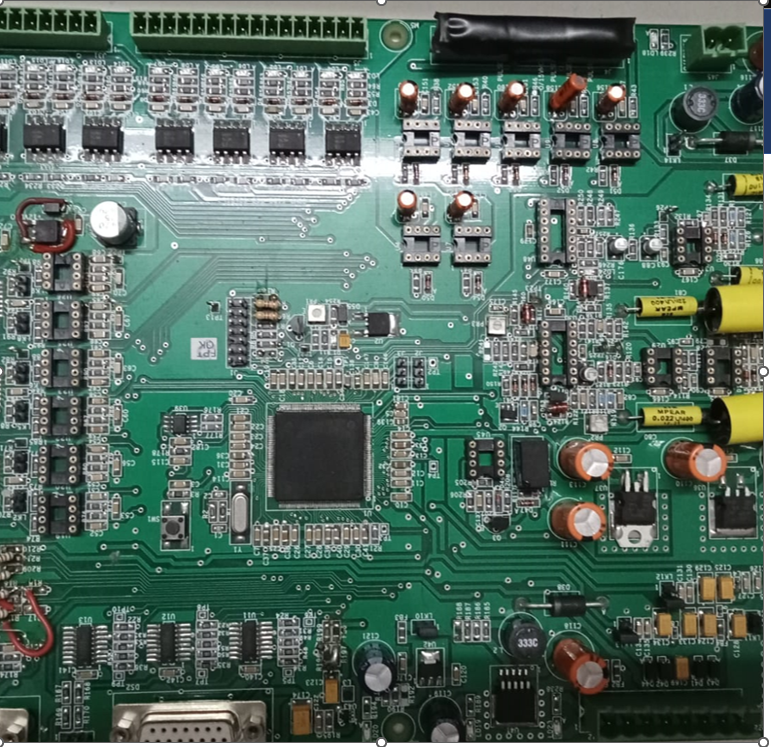Developing Indigenous CNC Controllers for EDM Machines
Detailed Case Study
Developing Indigenous CNC Controllers for EDM Machines
Introduction
A prominent manufacturer of CNC Electrostatic Discharge Machines (EDMs) and Wire Cutting Machines was facing a significant challenge. While they had successfully developed most of the components for their machines in-house, including accessory boards and high voltage discharge circuits, they remained dependent on a Taiwanese corporation for the crucial CNC controllers - the heart of their machines.
This reliance on imported controllers presented several issues:
- Limited control over design and features
- Inability to differentiate their products from competitors using the same controllers
- Challenges in implementing customer-requested features
- Potential supply chain vulnerabilities
To address these challenges and gain a competitive edge, the manufacturer partnered with Softwise Mechatronics to develop an indigenous CNC controller that could match or exceed the performance of the imported units.
Identifying the Problems
Our team at Softwise Mechatronics conducted extensive meetings with the client's team, including senior engineers and technicians. We focused on understanding:
- The EDM process and its critical parameters
- Factors affecting metal removal rate and surface finish
- Limitations of the client's original prototype
- Desired improvements over the imported controllers
Through these discussions, we identified several key issues:
- Inadequate sampling rates in the original prototype
- Suboptimal interrupt priorities affecting performance
- Lack of customization options in the imported controllers
- Need for improved surface finish and material removal rates
- Desire for modern user interface and data storage capabilities
We categorized our objectives into three priority levels:
Must-haves:
- Superior surface finish compared to standard controllers
- Optimized control parameters for each machine model
- Faster material removal rate than imported controllers
Good-to-haves:
- Ability to store machining data during power failures without external batteries
- Modern, Linux-based user interface to avoid OS licensing costs
Stretch goals:
- Additional advanced features as requested by long-standing customers
Our Solution
Based on our analysis, we developed a comprehensive solution:
- Hardware Selection: We chose a high-end dual core TI C2000 series microcontroller with 32 but floating-point architecture, for its powerful processing capabilities and real-time control features.
- Circuit Design: Our team completed the circuit design and PCB layout, ensuring seamless integration with the client's existing boards and circuits.
- User Interface: We selected a robust Linux Single Board Computer (SBC) for the graphical user interface. Leveraging the client's existing C++ source code for their Windows-based GUI, we redesigned the interface for a more modern look and feel while adding new modules for advanced features.
- Embedded Software: Our development team focused on optimizing the control algorithms to achieve better surface finish and material removal rates. The insights provided by the client's senior engineers were invaluable in fine-tuning these parameters.
- Integration: We ensured that the new controller could seamlessly control all machine axes while maintaining or improving upon the performance of the imported units.
The Result
The indigenous CNC controller developed by Softwise Mechatronics exceeded expectations:
- Performance: The new controller achieved both better surface finish and faster material removal rates compared to the imported units.
- Customization: The client gained full control over the controller's design, allowing them to implement unique features and respond quickly to customer requests.
- User Experience: The modern, Linux-based interface provided an intuitive and responsive user experience.
- Data Management: Improved data storage capabilities enhanced the machine's reliability and reduced downtime.
- Cost-Effectiveness: By eliminating dependency on imported controllers, the client reduced costs and improved their profit margins.
- Market Differentiation: The custom controller allowed the client to offer unique features, setting their machines apart in a competitive market.
The successful development of this indigenous CNC controller not only solved the client's immediate challenges but also positioned them for long-term success in the EDM and Wire Cutting Machine market. The project demonstrated Softwise Mechatronics' expertise in control systems, embedded engineering, and software development, particularly in the specialized field of EDM technology.
Other Case Studies
Innovative Thread Grinding Software Solution for CNC Machine Manufacturer Read Advanced Communication Controller for Defense Project Read Advanced EGR Valve Control Module for Enginetech Systems ReadIndustries We Serve
Automotive Learn More Consumer Electronics Learn More Defense and Aerospace Learn More Energy and Utilities Learn More Industrial Products and Machine Tools Learn More Pharma Equipment and Manufacturing Learn MoreReady to Get Started?
Let's discuss how our services can elevate your engineering projects.
Contact Us Today
